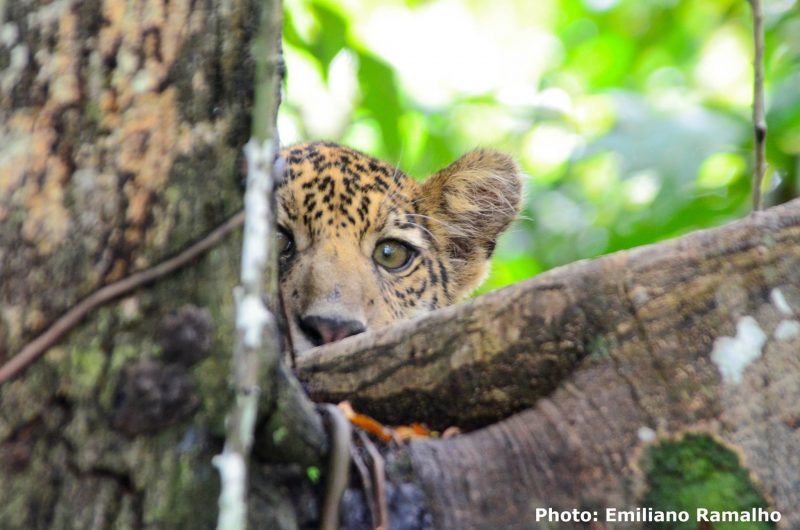The diverse local flora and fauna attract visitors from all over the world
The first Sustainable Development Reserve of Brazil, founded in 1996, occupies an area of 1,124,000 hectares in the heart of the Amazon Forest. The Mamirauá Reserve is one of the largest reserves of flooded area in the world and is home to an incredible biodiversity, in addition to the more than 10,000 people who live there.
Mamirauá Reserve and Uakari Lodge, installed inside the reserve and managed entirely by the community, were created with the aim of reconciling the conservation of biodiversity with a sustainable development for the benefit of local populations. Today, travellers from all over the world have the opportunity to visit Mamirauá by staying at the lodge. With exciting wildlife and flora observation tours, this is today one of the most coveted itineraries in the Amazon.
The reserve has already cataloged more than 300 species of fish, about 400 species of birds and at least 45 species of mammals. Check out some of the animals that you can find there!
(For information and booking at Uakari Lodge, please contact us at: [email protected])
White uakari monkey
Monkeys are the first reason for the Mamirauá Reserve creation. It was established in order to study and preserve monkeys. The bald uakari are characteristic of the Amazon and they were inspiration for the Uakari Lodge name. The white uakari were once determined as extinct and is one of the three species of uakari monkeys that you can observe in the Mamirauá Reserve.
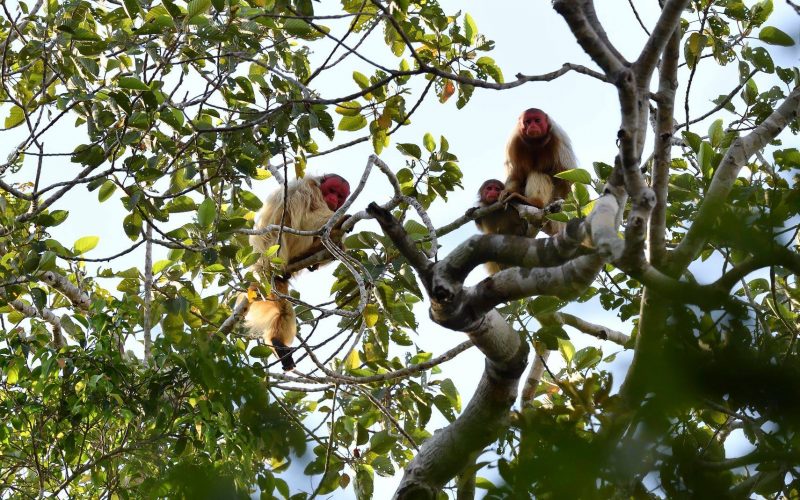
Macaco uacari branco | Foto: Jean Claude Rouquette
Tucuxi
The tucuxi, also known as black dolphin, is a species of dolphin that lives in the rivers of the Amazon. Although they inhabit the same fresh waters as the pink dolphins, they are genetically closer to the marine dolphins. The tucuxis swim at speeds up to 60km/h and can jump up to five meters above the water. On a boat trip around the area you are likely to come across them.
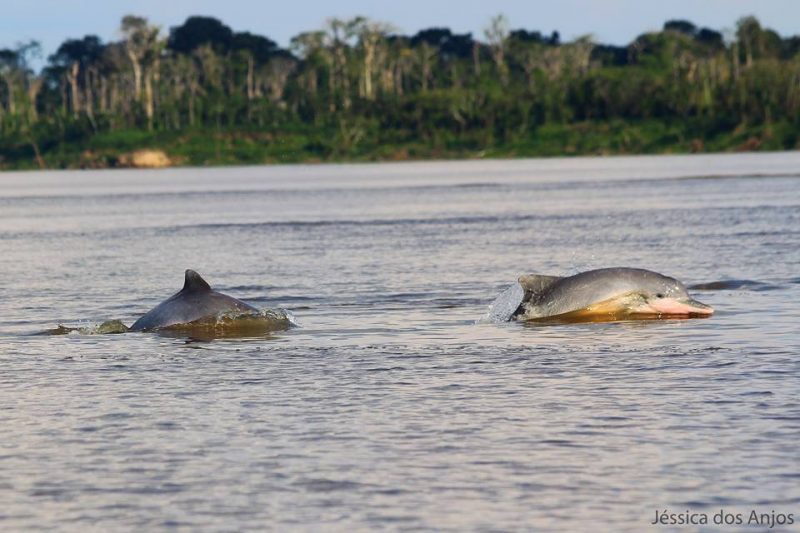
Tucuxis | Foto: Jéssica dos Anjos
Jaguar
During the flooded season in the jungle (between April and June), the largest wild cat in the Americas exhibits its arboreal behaviour. This is the moment when you can observe the jaguars on top of the trees. Very few people have the opportunity to see them at that time, since the Jaguar Expedition opens only a few places each year. For 2019 they are fully booked.
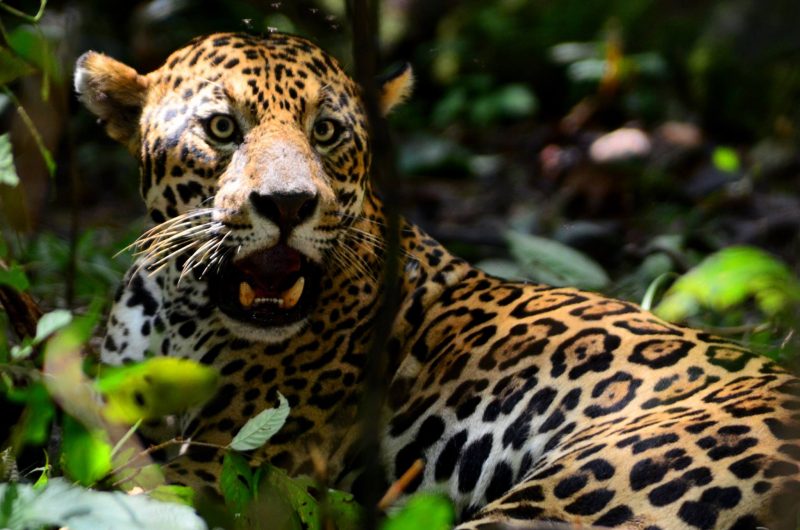
Foto: Instituto Mamirauá
Black squirrel monkey
Considered an endangered species, the black squirrel monkey is endemic to Mamirauá Reserve and receives special conservation care. Its scientific name, Saimiri vanzolinii, was given by the creator of the Mamirauá Institute, Márcio Ayres, in honour of the composer, and also biologist, Paulo Vanzolini. About 150,000 animals today inhabit an area of only 870 kilometres in the south of the reserve. It is considered one of the 15 priority Amazonian species by the National Plan of Primates.
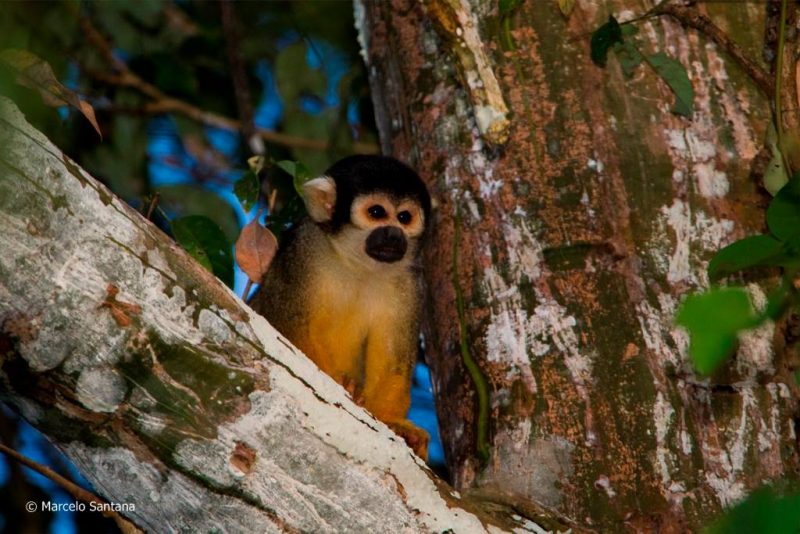
Macaco-de-cheiro-de-cabeça-preta | Foto: Marcelo Santana
Southern Amazon red squirrel
The southern Amazon red squirrel is a tropical squirrel that inhabits the Amazon region and feeds on fruits, seeds and nuts. It is often seen in couples, but it also has solitary behaviour.
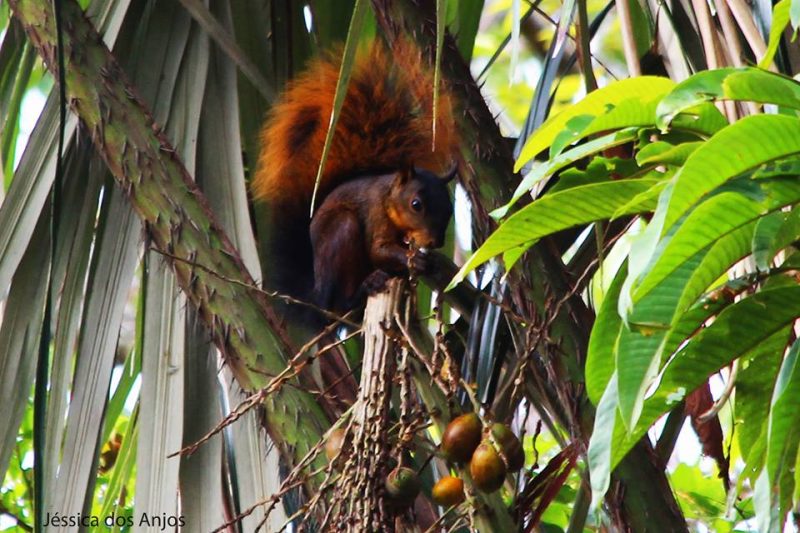
Foto: Jéssica dos Anjos
Grey hawk
It has a neotropical occurrence and it’s found in Latin America, from Mexico to Paraguay.

Foto: Jéssica dos Anjos
Agami heron
The agami heron is a difficult species to sight and is classified as vulnerable by the IUCN (International Union for Conservation of Nature). It makes a low-pitched sound similar to a pig’s grunt.

Foto: Pedro Nassar
Black caiman
It is one of the four species of Amazonian alligators studied by the Research Program on Conservation and Management of Alligators of the Mamirauá Institute. Quite common on the outskirts of Uakari Lodge, the black caiman is the largest alligator that inhabits the region. It can reach 6 meters and weigh up to 300 kg.

Foto: Bruno Barreto
Hoatzin
The Hoatzin, also known as the reptile bird, skunk bird and stinkbird, are well prepared to avoid their predators. For this reason, they have managed to maintain the high population of their species. Like any bird, it fulfils a lifecycle within aquatic ecosystems. It is one of the three species of birds that have claws in their wings, similar to those found in the Archeopteryx dinosaur, that lived 145 million years ago.

Foto: Pedro Nassar
Sloth
The folivora, popularly known as sloth, loves to stay on trees, but it is also a great swimmer. That’s why it adapts well in the region. Its great predator is the jaguar.

Foto: Jéssica Dos Anjos

